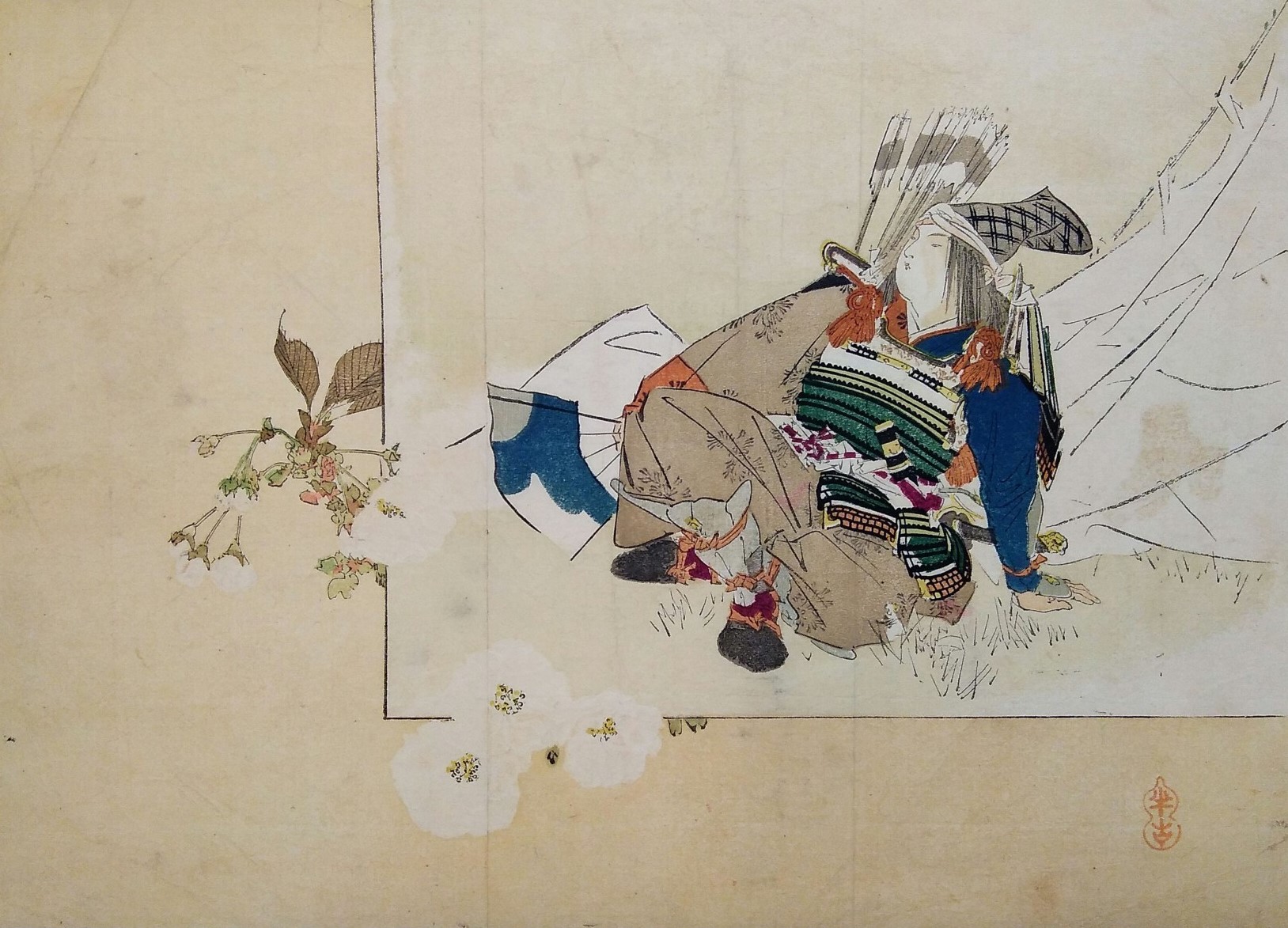


The print is in good condition. The colors are vivid and well-preserved, with no repairs or obvious folds or stains compromising the integrity of the artwork.
Young warrior (Waka musha, 若武者).
A print depicting a young warrior, likely Minamoto no Yoshitsune, in a moment of rest.
Born in 1159, Yoshitsune was the son of Minamoto no Yoshitomo, leader of the Minamoto clan, and Tokiwa Gozen. His youth was marked by conflict as the Minamoto clan sought to assert its power during the Heian period.
After losing his father and two brothers in the "Heiji Rebellion" (Heiji no ran), Yoshitsune had to flee the capital and took refuge in Kurama Temple, where he was initially educated to become a monk. However, driven by
the desire to become a samurai, he left the temple and his mother forever.
His skill with the sword became legendary, particularly after defeating the warrior monk Benkei in a duel, who then became his faithful servant. Yoshitsune is renowned for his key role during the Genpei War (Genpei gassen),
leading the Minamoto clan to victory against the Taira clan, thus consolidating the power of his half-brother Minamoto no Yoritomo.
After the war, despite being appointed governor of Iyo and receiving numerous titles from the cloistered Emperor Go-Shirakawa, his rise aroused suspicion in his brother Yoritomo, who nullified the conferred titles and hindered
Yoshitsune, leading to their estrangement. This fraternal conflict culminated in a manhunt for Yoshitsune, who had to flee to save himself and, ultimately, betrayed by an ally, was forced to commit seppuku in 1189.
Yoshitsune`s life has been immortalized in numerous literary works, including the classic "Heike Monogatari", and has given rise to the term "Hōgan-biiki" (sympathy for the tragic hero), deriving from the title "Kurō Hōgan" conferred
on him by the imperial court. His heroic figure is often represented as a symbol of military virtue and courage, but also of a certain naivety and tragedy due to his premature end.
The print is in good condition. The colors are vivid and well-preserved, with no repairs or obvious folds or stains compromising the integrity of the artwork.
| Price | |
|---|---|
| Series | Bungei kurabu (文芸倶楽部) vol. 7, N.14. |
| Author | Kajita Hanko (梶田半古). |
| Size | Aiban (間判) 30cm x 22cm (11,81 x 8,66 inches). |
| Publisher | Hakubunkan (博文館). |
| Number | / |
| Genre | Musha-e (武者絵), kuchi-e (口絵). |
| Period | C. 1901 ~ 1907 |
| Trimmed | No |
| Backed | No |
| Code | KHK01003 |
